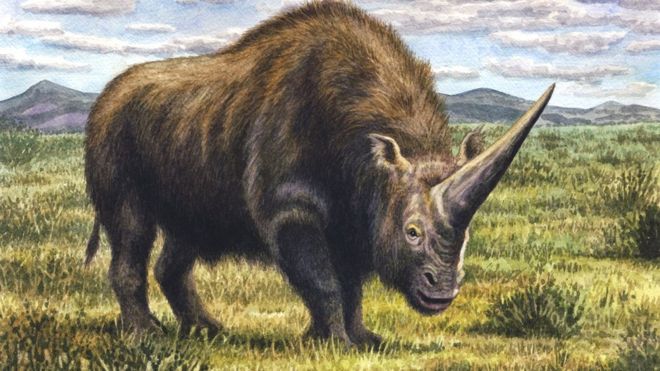Post by dinosauria101 on May 3, 2019 20:54:46 GMT 5
European Hippopotamus - Hippopotamus antiquus
Hippopotamus antiquus, sometimes called the European hippopotamus, was a species of hippopotamus that ranged across Europe, becoming extinct some time before the last ice age at the end of the Pleistocene epoch. H. antiquus ranged from the Iberian Peninsula to the British Isles to the Rhine River to Greece. Similar in size and form to Hippopotamus gorgops, H. antiquus on average was larger than the modern common hippopotamus (Hippopotamus amphibius). H. antiquus is believed to have first appeared around 1.8 million years ago, compared to 2 million years ago for H. amphibius. Beginning in the Middle Pleistocene, H. amphibius migrated into Europe and may have competed with this hippopotamus species for food. The Cretan Dwarf Hippopotamus (H. creutzburgi) is believed to have evolved from H. antiquus through the process of insular dwarfism on the island of Crete. Martínez-Navarro et al. (2004) estimated a body mass for H. antiquus between 2.500-4000 Kg, which is more than two times heavier than the mean weight of its extant relative.


Elasmotherium sibiricum
Elasmotherium ("thin plate beast") is an extinct genus of large rhinoceros endemic to Eurasia during the Late Pliocene through the Pleistocene, existing from 2.6 Ma to at least as late as 39,000 years ago in the Late Pleistocene. E. sibiricum, was the size of a mammoth and is thought to have borne a large, thick horn on its forehead. Theories about the function of this horn include defence, attracting mates, driving away competitors, sweeping snow from the grass in winter and digging for water and plant roots. Like all rhinoceroses, elasmotheres were herbivorous. Unlike any others, its high-crowned molars were ever-growing. Its legs were longer than those of other rhinos and were adapted for galloping, giving it a horse-like gait. The known specimens of E. sibiricum reach up to 4.5 m (15 ft) in body length with shoulder heights over 2 m (6 ft 7 in). Elasmotherium weighed 4.5-5 ton.

Credit to Wikipedia
Hippopotamus antiquus, sometimes called the European hippopotamus, was a species of hippopotamus that ranged across Europe, becoming extinct some time before the last ice age at the end of the Pleistocene epoch. H. antiquus ranged from the Iberian Peninsula to the British Isles to the Rhine River to Greece. Similar in size and form to Hippopotamus gorgops, H. antiquus on average was larger than the modern common hippopotamus (Hippopotamus amphibius). H. antiquus is believed to have first appeared around 1.8 million years ago, compared to 2 million years ago for H. amphibius. Beginning in the Middle Pleistocene, H. amphibius migrated into Europe and may have competed with this hippopotamus species for food. The Cretan Dwarf Hippopotamus (H. creutzburgi) is believed to have evolved from H. antiquus through the process of insular dwarfism on the island of Crete. Martínez-Navarro et al. (2004) estimated a body mass for H. antiquus between 2.500-4000 Kg, which is more than two times heavier than the mean weight of its extant relative.

Elasmotherium sibiricum
Elasmotherium ("thin plate beast") is an extinct genus of large rhinoceros endemic to Eurasia during the Late Pliocene through the Pleistocene, existing from 2.6 Ma to at least as late as 39,000 years ago in the Late Pleistocene. E. sibiricum, was the size of a mammoth and is thought to have borne a large, thick horn on its forehead. Theories about the function of this horn include defence, attracting mates, driving away competitors, sweeping snow from the grass in winter and digging for water and plant roots. Like all rhinoceroses, elasmotheres were herbivorous. Unlike any others, its high-crowned molars were ever-growing. Its legs were longer than those of other rhinos and were adapted for galloping, giving it a horse-like gait. The known specimens of E. sibiricum reach up to 4.5 m (15 ft) in body length with shoulder heights over 2 m (6 ft 7 in). Elasmotherium weighed 4.5-5 ton.

Credit to Wikipedia








